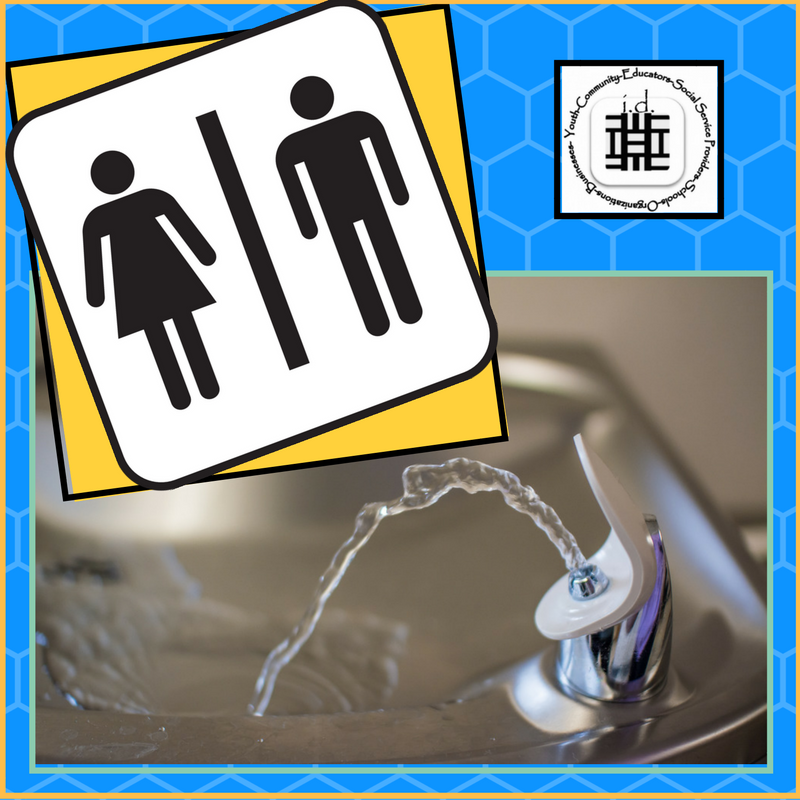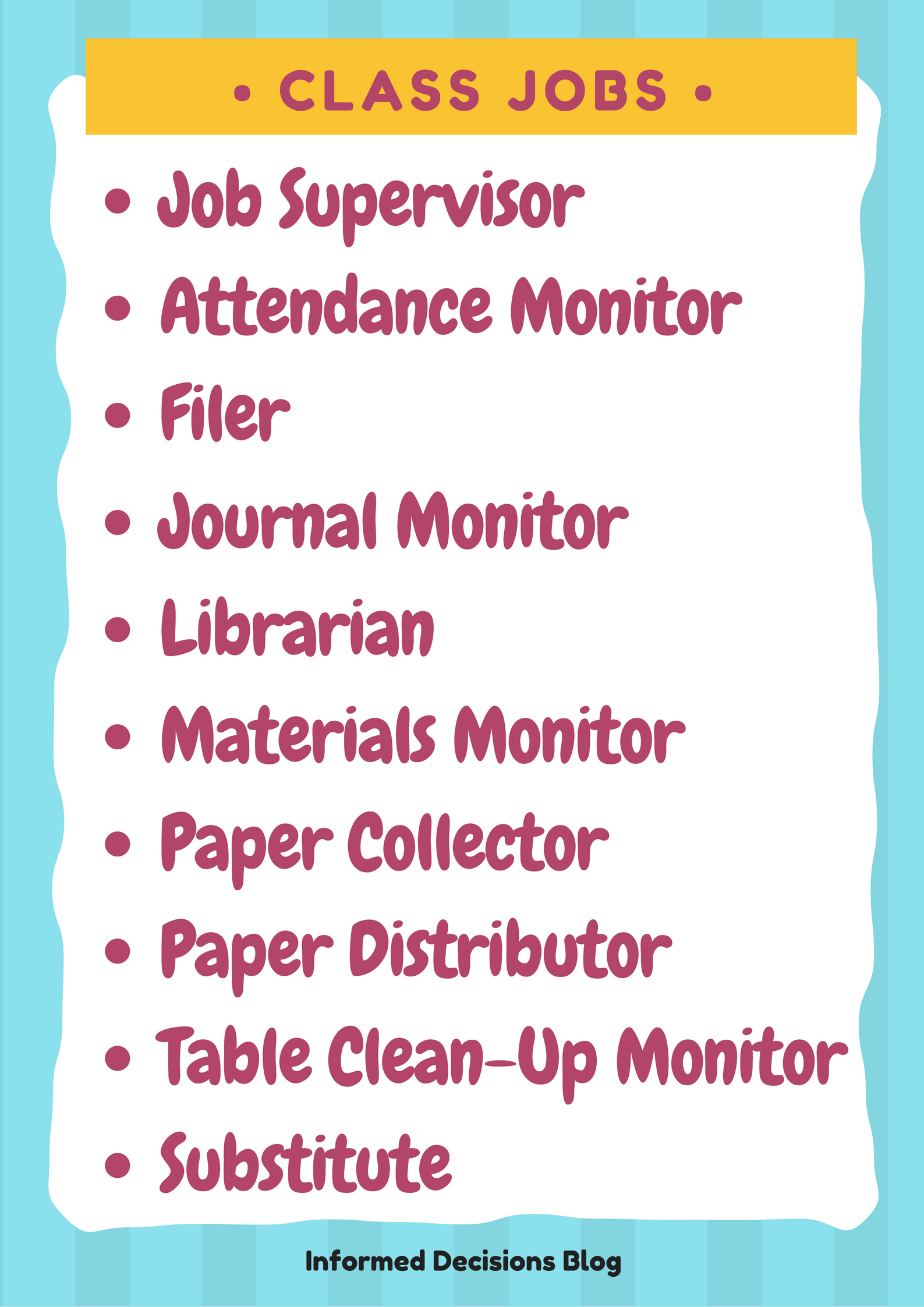I know you’ve been anxiously awaiting to learn about part II of Smart Strategies for Establishing Group and Class Routines And Procedures. You have already learned about the when, why, and how to establish routines and policies – with the added bonus of concrete examples for procedures and routines for entering the class or group. You’re now ready to take on more smart strategies for establishing routines and procedures for exiting the class or group, in-between times, communication, and managing materials.

When routines and procedures are created for exiting the group or class, it will aid in ensuring that participants transition to their next space smoothly. And yes, that’s exactly what you want.
Clean-Up 
AVOID: Participants leaving the room a hot mess, you have to clean-up.
IDEAS: Have participants take responsibility for their own space. Before they’re permitted to leave the room, the area should be cleaned-up and checked.
You can have one of the participants assigned to monitor and make sure that the room is clean before the group leaves.
You can post the quote, “Leave this space better than when you arrived.” It aids as a reminder to start taking responsibility for their own space before they leave the room.
Dismissal
AVOID: Participants running out of the room and not getting the information needed for assignments, or even leaving the room in disarray.
IDEAS: Leave yourself five minutes before the class or group is over. Students can then get the information they need for their assignments and you can ensure everything is picked up and put away (See “Clean-up” procedures above).
Create a signal to inform students that the class is over. Some educators use the bell, but you can be creative in whatever you want to use as a signal.
You can choose to dismiss participants individually or all at the same time. Use your discretion and the style that’s going to work for you.
The in-between times focus on transitions – this can be before, after, or during the group or class. These routines and procedures will help you to avoid interruptions and get the participants quickly refocused on their activity.
Bathroom and Water Breaks 
AVOID: Your young people going to the restroom in groups. Some of them make calls or text (even though many
schools don’t allow cell phones). They may also be meeting others to engage in “extra-curricular activities.” Yes, this really happens!
IDEAS: Have participants go the bathroom one at a time. Participants can sign in and out when they leave the room. This can help you coordinate with other staff to see if there is an ongoing issue. (See “Passes” below).
If, the restroom requires a key, put the keys on a large object so that it will not be lost or misplaced. Also, keep a spare key just in the case someone locks it in the restroom, brings it home with them, or puts it in their pocket and forget it’s there. Yes, even with a giant object attached to the key, it may still disappear.
Passes
AVOID: Participants frequently leaving class or group whenever they feel like it.
IDEAS: Have participants sign in and out of class or group using a sign-out book. This aids in monitoring the needs, concerns, and frequent activities of the participants. This information is useful in Student Support Team meetings. With this information, I’ve learned that participants have asked to go to the nurse on some of the days they had physical education. (This had occurred in multiple classes). It turned out that they weren’t comfortable with changing, so they avoided going to class on those days. I’d also discovered a participant sign-out to the bathroom and rendezvous with her boyfriend. This, then, affords you the opportunity to have a one-on-one conversation and find out what is contributing to them missing a lot of the class or group and address the situations that occur.
Transitions From Room to Room
AVOID: Participants screaming in the hallway and disrupting other groups or classes.
IDEAS: Have participants walk through the halls quietly, as other classes may be in session. Use the agreed upon hand signals to gain students’ attention in the hallways. (See “Communication – Getting Group Attention” below).
Lunch
 AVOID: Participants arriving back from lunch late and then having to stop the class or group to explain what the participant has missed. You also want to avoid having the students tired and not engaged in the activities. This can also occur when students are full after lunch.
AVOID: Participants arriving back from lunch late and then having to stop the class or group to explain what the participant has missed. You also want to avoid having the students tired and not engaged in the activities. This can also occur when students are full after lunch.
IDEAS: Have clear times set for the arrival back to class or group. Use community service time, as discussed in the Smart Strategies for Establishing Group and Class Routines and Procedures blog post.
Use energizers (quick activities for the participants to move around) in order to re-engage the participants in the activities if they appear tired or not engaged.
Completing Work Early 
AVOID: Participants distracting others who haven’t yet completed their work.
IDEAS: Have procedures put in place for when the work is completed early. Hang a poster in the room of procedures, “If You Complete Your Work Early…” This poster should include a list of what to do, in the order you would like participants to complete the activities. (See the “If You Complete Your Work Early… poster on the right for an idea of how to design the poster).
Have long-running assignments and books available for students to work on when tasks are complete.
Unplanned Interruptions
AVOID: Participants getting off-task and not being able to refocus on the activity.
IDEAS: Have procedures for the following interruptions:
- Called to the door for a minute – Participants should be directed to not interact with people coming to the door, unless otherwise directed, and continue their activity as planned.
- Loud speaker announcement – Participants should stop what they are doing and listen to the announcements, and then continue their activity as planned.
- Fire drill or lock-down drill – Participate in the drill and resume the activities as directed.
Routines and procedures for communication allow the participants easy ways to communicate with the staff or their peers, while limiting the disruptions and distractions during activities.
Group Work
 Conflicts and heated confrontation, within the group. You don’t want participants to get in an altercation over a group activity.
Conflicts and heated confrontation, within the group. You don’t want participants to get in an altercation over a group activity.
IDEAS: Discuss appropriate behaviors for group work in advance, and refer to Answers To Essential Questions: Creating Ground Rules And Group Agreements.
Have set roles for group work: leader, recorder, and reporter. Set rules for the participants to agree to disagree and learn to work on compromising skills.
Getting Group Attention
AVOID: Yelling over the participants in order to get their attention.
IDEAS: Use attention getting mechanisms (AGM’s). It’s a great way to get participants focused and get their attention. This is where you get to be creative and come up with something fun and exciting.
Getting Staff Attention
AVOID: Participants interrupting you and screaming your name in the middle of class or group session.
IDEAS: Provide signals that the participants can use. For example, they can hold up their pointer finger for a question, two fingers for using the restroom, and three fingers for the nurse. Then you can either give a nod or come up with another signal to let them know it is okay, go ahead and leave the room or answer their question.
Creating routines and procedures for managing materials. This enables you to keep track of and keep supplies organized.
Job Chart 
AVOID: Tasks not getting done and lack of organization within the group or class.
IDEAS: Have participants volunteer for positions on the job chart. It will help them learn responsibility and leadership, while gaining a sense of independence. Create positions needed in your class or group in order to help it run efficiently. Make sure to provide clear descriptions so the students know their responsibilities. Jobs really work well with someone who is easily distracted, not engaged, or done early.
Distribution and Collection of Materials
AVOID: Participants not returning materials and having to pay for them out of your own pocket. This can really add up.
IDEAS: You can have the distribution and collection of materials be a rotating job on the job chart, or you can always choose someone who is easily distracted, not engaged, or done early.
Labeling Papers
AVOID: Not having names on papers or missing assignments from students who insisted that they turned them in.
IDEAS: Provide specific instructions on where you’d like the information listed on the paper: name, date, subject or topic, period, etc. You want to provide the students both written and oral directions.
You can also create a bulletin board for no-named papers, or simply throw papers without names away. That’s up to you!
Sharpening Pencils
 AVOID: Participants making noises, standing at the sharpener for long periods of time, getting up multiple times,
AVOID: Participants making noises, standing at the sharpener for long periods of time, getting up multiple times,
and sharpening pencils while you are talking. Arrrgggg!!!!!
IDEAS: You can have pre-sharpened pencils. (But this takes a long time. It’s a good “community service project”).
An alternative is that pencils can be sharpened when the activity begins or during a transition.
Make-Up Work
AVOID: Participants and parents/guardians stating that they were not given enough time to make up the work.
IDEAS: Provide a time limit on how long the students have to turn in the assignment, after it’s missed or they are absent. A week is usually a good amount of time, depending on how much work is needed to be made up.
Provide the participants with a handout of your grading policies on the first day. (See “Grading Policy below).
Create an easy way for students to know if they are missing any assignments. (See “Assignment Bin” below).
Assignment Bin
AVOID: Having to provide each individual assignments which are missed. Waiting until the end of the marking period for all of the make-up work on the last day of the term. This leaves you up until crazy hours finishing your grading. (You do want some kind of a life).
IDEAS: I created a bin that had both classwork and homework assignments. Each assignment has written directions, and is provided a number. Each assignment is placed in a separate folder. The folders are labeled with the corresponding number to the assignment. Copies of the sheets with the assignments are in the first folder in the front of the bin. It should be updated at the end of each week. Additionally, you can create a poster with the students names that shows if they turned in the assignment or not. This can be a great way to avoid having to tell each student what they need to make up.
Grading Policy
AVOID: Conflicts over grading policies.
IDEAS: Provide clear rules and procedures at the beginning of the program or class. Have concrete written policies and procedures for grading. Send home policies to be signed by the parent/ guardian and the participants stating that they read and understand these policies. The school may have policies in place for how the grading is done already.
Use of Materials 
AVOID: Freely providing materials and continually replacing them out of your pocket.
IDEAS: Depending on what the item is, use sign-out sheets. This is especially useful for electronics and large items.
I also have a rent and purchase system for pens and pencils: five cents to rent, 10 cents to buy. The money goes toward repurchasing more pens and pencils. It teaches participants responsibility and to be prepared. Some participants may also be encouraged to share and work with each other.
Hopefully this will give you some new ideas for implementing policies and procedures in your group or class.
Please let me know if you have great ideas that you use with your group or class. I would love to hear them!
POSTS YOU DON’T WANT TO MISS…





Wow! There are so many wonderful ideas in here. I literally printed off this page right now so I could read it later and bookmarked it to come back to. Will definitely be sharing your post with other teachers at my school. Thank you for sharing.
Thank you. I am so glad you enjoyed the post.
LOVE your post. There are so many AMAZING information and “personal experiences” in it. Thanks for sharing.
Thank you. I am glad you enjoyed it!
Love this comprehensive list! Thank you!
Thank you. I’m so glad!